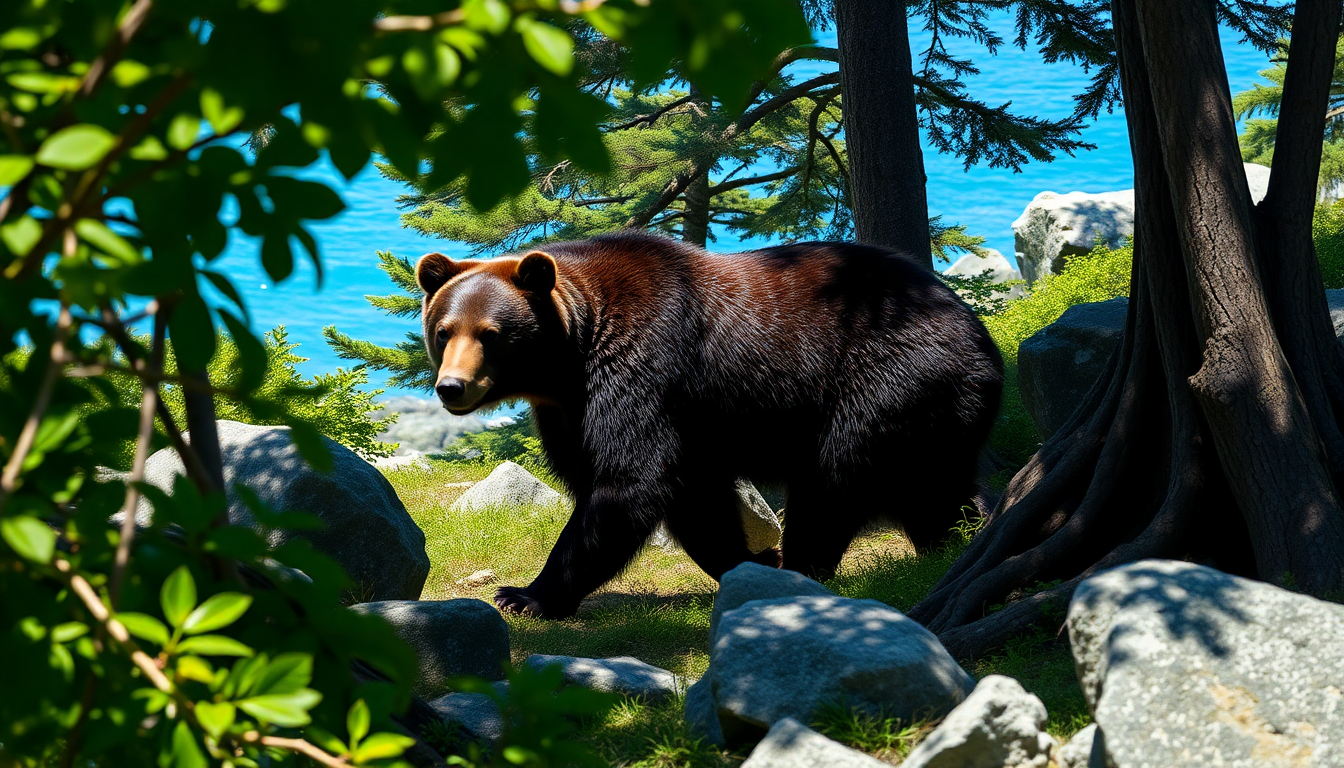Table of Contents
The recent appearance of a grizzly bear on Texada Island has ignited an important conversation about wildlife management and conservation in British Columbia. This four-year-old male bear, which made quite a journey by swimming over from the mainland, has been roaming the island for nearly a month now.
The Mamalilikulla First Nation is particularly concerned about the bear’s safety and has proposed a relocation plan that stands in stark contrast to the provincial government’s more hands-off approach. This situation really highlights the delicate balance between human interests and wildlife conservation in our ever-changing world.
The Bear’s Journey and Current Situation
When this grizzly bear was first spotted on Texada Island, it quickly became a hot topic. Residents are understandably worried about its safety, especially since it’s been hanging out close to populated areas.
In a show of community spirit, locals have even stepped up to privately fund a relocation effort, reflecting their proactive attitude towards wildlife conservation. The Mamalilikulla First Nation has offered to take the bear to their territory in Knight Inlet, a historically rich area for grizzly bears that would provide a much safer and more suitable environment for the animal.
John Powell, the elected chief of the Mamalilikulla First Nation, has been quite vocal about the bear’s urgent need for a safe habitat. He points out that Texada Island isn’t the best home for the bear, given the potential for negative interactions with humans who might not be used to living so close to wildlife.
Powell’s insights underscore the ongoing challenges we face in coexisting with bears, particularly as urban development continues to encroach on their natural habitats.
Provincial Government’s Position
The provincial government has taken a more cautious stance on the matter. Their current plan involves letting the bear venture off on its own, either in search of a mate or a suitable spot for hibernation.
However, this approach has raised eyebrows among local stakeholders. Many believe that waiting for the bear to leave on its own could lead to dangerous situations. Randene Neill, the Minister of Water Land and Resource Stewardship, pointed out that the likelihood of bears successfully relocating decreases with each attempt, which only complicates the already tricky business of managing wildlife.
To make matters even more complex, the bear’s history of returning to urban areas after previous relocations adds another layer of difficulty. There have been reports of aggressive behavior towards humans and livestock, which have understandably raised concerns about safety. The government’s desire for the bear to remain in the backcountry—far from human interaction—reflects a deeper worry about the potential fallout from urban wildlife encounters.
Community Perspectives and Future Outlook
The residents of Texada Island find themselves in a tough spot, torn between wanting to keep themselves safe and genuinely caring for the bear’s future. While they support relocation efforts, they also don’t want to have a grizzly bear sharing their living spaces. Powell’s comments highlight the community’s readiness to help fund the bear’s relocation, suggesting that a win-win solution could indeed be possible. The idea of setting a precedent for future wildlife management decisions is also on the table, as the province considers the implications of their actions.
In conclusion, the situation surrounding the grizzly bear on Texada Island sheds light on the complexities of wildlife management in British Columbia. The ongoing conversations between the First Nation, local residents, and the provincial government are vital in crafting a solution that respects both human safety and wildlife conservation. As everyone involved navigates these challenges, there’s a hopeful outlook that the bear can find a new home where it can thrive, far away from urban interactions.





